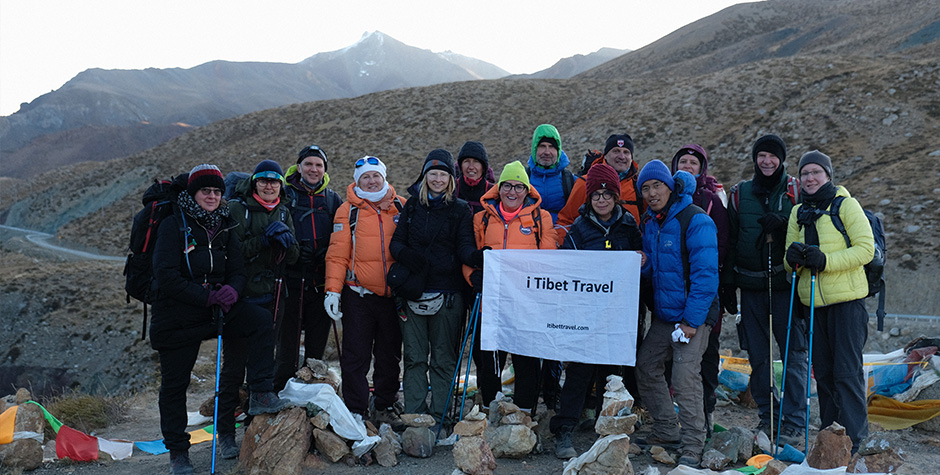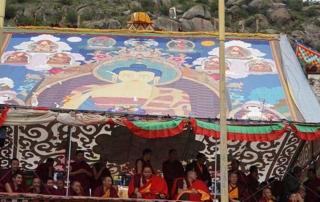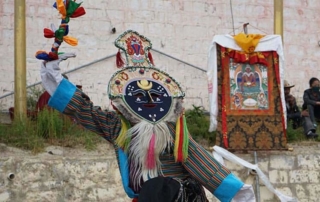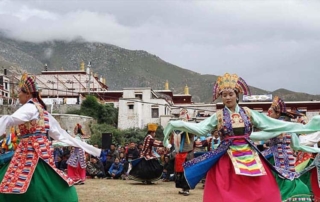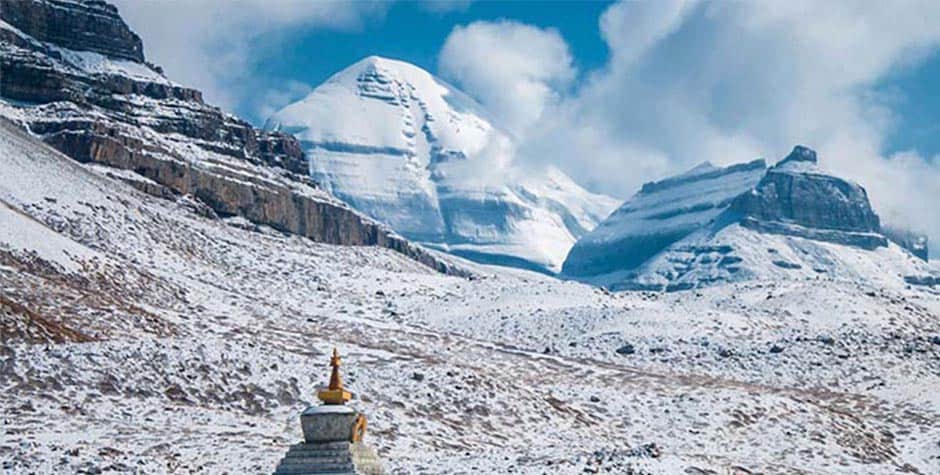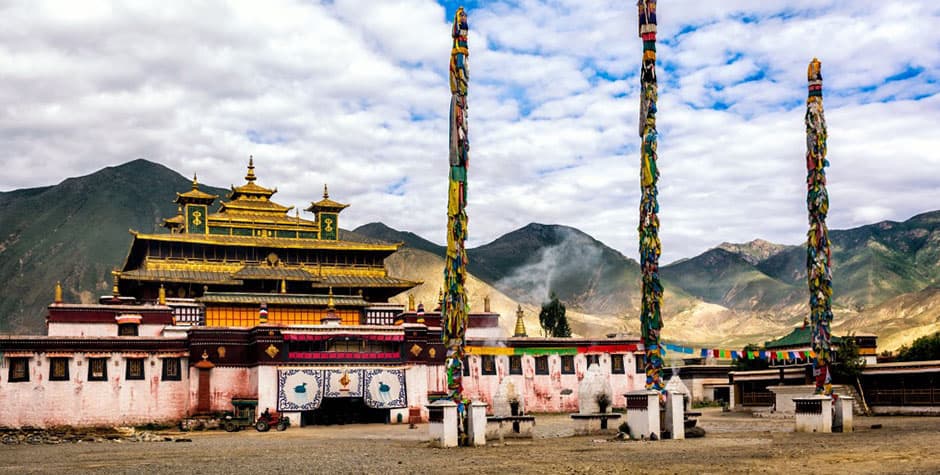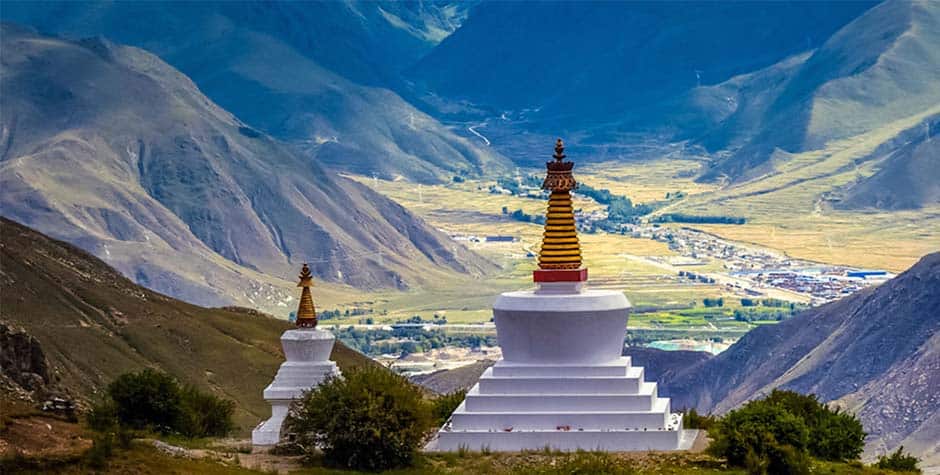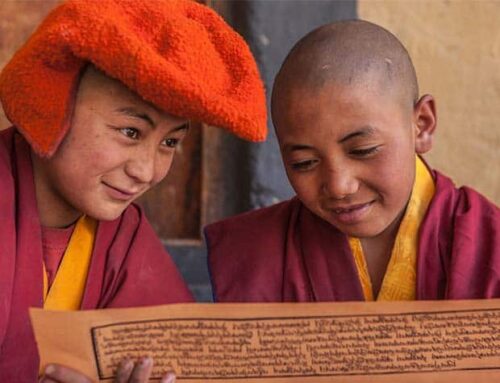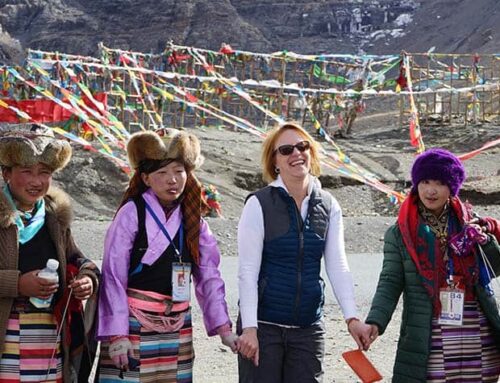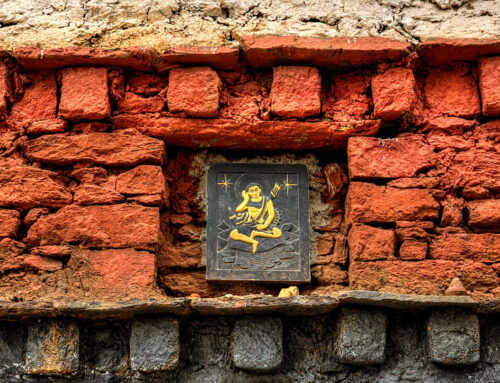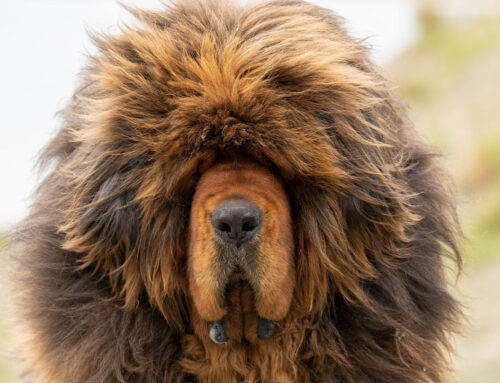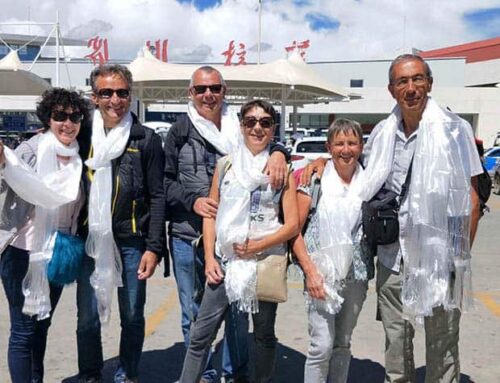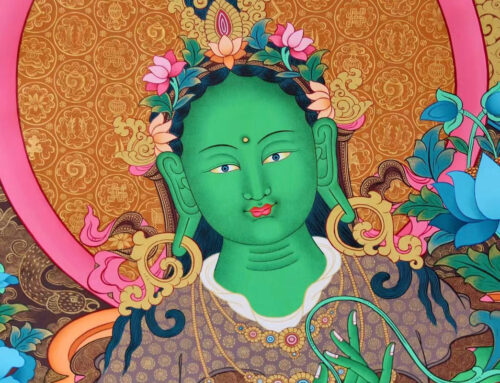Tibetan Opera is known as Lhamo or Ache Lhamo in Tibetan. During your Tibet travel, you will often find performances in villages and. If you visit Lhasa, during the Lhasa Yogurt festival. Tibet’s cultural wisdom has been pass down for thousands of years and reflects in the Tibetan Opera. Many Tibetologists consider the Tibetan Opera a living fossil of Tibetan culture.
Legend has it that in the 14th Century, mystic Thangtong Gyalpo start the Tibetan Opera culture to raise funds for building iron bridges throughout the Tibetan Plateau. He receive help from 12 sisters to perform in the Opera. Who were the first Ache Lhamo (Meaning sister goddess)?
Stories in Tibetan Opera
All Tibetan Opera performances are based on ancient Indian Buddhist folk tales, and Princess Wencheng’s opera is also base on history.
Another reason for his troupe to travel far and wide is to spread the teachings of Lord Buddha through entertainment. Most of the stories in the performances are about the hard work and struggle of good people and the ultimate triumph of good over evil.
Right now, there are nine major traditional Tibetan operas.
Performance of Tibetan Opera
The procedure and performance style have not change much since the 14th Century. Nowadays, the same opening rituals are enact before the commencement of every performance, authentic costumes are worn, and singing, dance, and musical traditions are strictly adhered to.
Little information exists about the development of Tibetan Opera until the time of the 5th Dalai Lama. According to some sources, the fifth Dalai Lama designe the hunter’s mask and costume based on his dream. We have some murals about the Tibetan Opera in the Potala Palace.
In the early 19th Century, every county in Tibet has its amateur troupe performing locally during different occasions. Most famous troupes are Tashi Sholpa of Shol village below Potala palace, Chongye Phundun of Chongye in Shanan Prefecture, Shangpa of Jang Village, Gyalkhara, Chungpa of Quxul village, and Kyormulung of Tulung county are the most popular. This troupe regularly participate in the official festivals in Norbulingka, Drepung Monastery, and Sera Monastery.
Notable Troupes of Tibetan Opera
Notable troupes, including Tashi Sholpa, Chongye Phundun, Shangpa, Gyalkhara, Chungpa, and Kyormulung, have been much sought after. They are always a regular part of the official festivals at Norbulingka, Drepung Monastery, and Sera Monastery.
Tashi Sholpa
The Tashi Sholpa is the oldest and most popular Tibetan Opera Troupe in Tibet. This troupe has their dance for Good luck, which is commonly performe during inauguration special occasions such as big official gatherings and the construction or opening of a monastery. The performer would wear a whiteboard mask to represent Thantong Gyalpo, the founder of Tibetan Opera. Since he lives for 140 years, his representation symbolizes longevity and good health.
Opera Stories
Traditionally, there are nine different Tibetan opera performances. These stories are each exclusively performed by the particular troupe. The Kyormulung troupe exclusively performs Sukyi Nima, Drowa Sangmo, and Pema Woebar. Because of their monastic background, Gyalkhara solely performs Prince Norsang as their main performance. The troupe from the Muru Monastery performs only Deep Tenpa. The Chungpa Troupe performs Drimed Kunden.
People from all walks of life in Tibet are familiar with arias. They often sing them during social gatherings, religious festivals, and even while walking alone in remote places.
The background story of Tibetan opera and Thangtong Gyalpo
Thangtong Gyalpo start the Tibetan Opera in the 14th Century. He was born to a peasant family in Shigatse County in 1361. As a child, he was send to the Local monastery to learn about Buddhist Philosophy. During his childhood in the monastery, he was a smart child and easily learned everything.
Motivations for Starting Tibetan Opera.
Later, he came to Lhasa to further his studies. In Lhasa, he found that many people could not cross the river in a boat because they didn’t have the money to pay for it. So he beg the boatmen to let these people cross for free. However, instead of letting them cross for free, the boatmen beat Thangtong Gyalpo. After this incident, he generate an extreme desire to build a bridge over the river.
Formation of Troupe.
He selecte seven sisters from his labour while constructing a bridge at Chowo Ri. Then, he thought of their songs and dances. With them, he form the first Tibetan opera troupe. Girls wearing beautiful costumes travel around Tibet, performing to raise funds for the projects. The girls sang and danced while the yogi himself beat the Drum and cymbals. The Tibetans were so impress with the performance that they hailed the girls as goddesses. Since then, they have been known as Ache Lhasa (Sister Goddess). After a while, the performance of Tibetan Opera itself is call Ache Lhamo.
Iron Bridges and Tibetan Opera
The group raised funds for 58 iron and 60 wooden bridges across Tibet. Some of his iron bridges still exist in Tibet and Bhutan.
Now, in Tibet, it is customary for us to install statues and images of yogis when we move into a new home. Moreover, during Tibetan opera performances, it is customary to have a ritual dance and install his statues in the middle of the performance ground or stage to pay homage to him.
The Performance of the Tibetan Opera
Traditionally, Tibetan Opera or Ache Lhamo is performe outdoors on a circular stage where the audience sits around to enjoy the show. The stage may or may not have a tent above it.
Sequence of Tibetan Opera
Initially, all the troupe members would come to the stage to pay homage to the image or statue of Thangtong Gyalpo. This would be followe by the Hunters (Ngonpa) dance, while the Ngopas were dancing the auspicious dance. The seven Lhamos ( angels) and the narrator would appear on the stage. After the dance, the narrator would initiate the play by narrating the part of the story. This would be followed by song, dance, and singing of arias.
Subsequently, the actor plays the stories. During the play, there are lots of jokes, singing, and dancing as part of the story and the audience.
By the end of the play, usually with the victory of good over evil. There will be dance and song follow by the offering of incense to the god of the world out of gratitude.
Tibetan Opera in Modern Time.
Tibetan Opera has been listed as an intangible cultural heritage of the Tibetan People and the Chinese Nation by the UN, the Central Government in Beijing, and the Regional Government of Tibet.
The government has made many efforts to preserve and promote it. Now, all the counties in Tibet have a troupe. They have a yearly competition in the Norbulingka for a week-long traditional Tibetan Holiday of the Yoghurt festival in Lhasa.
Many schools in Lhasa have a Tibetan opera class as an extra-curricular activity. The most popular story in the Tibetan Opera in Tibet now is of Princess Wencheng. You can visit the Village Drip Tsechokling in Lhasa to see Princess Wencheng’s live performance.
